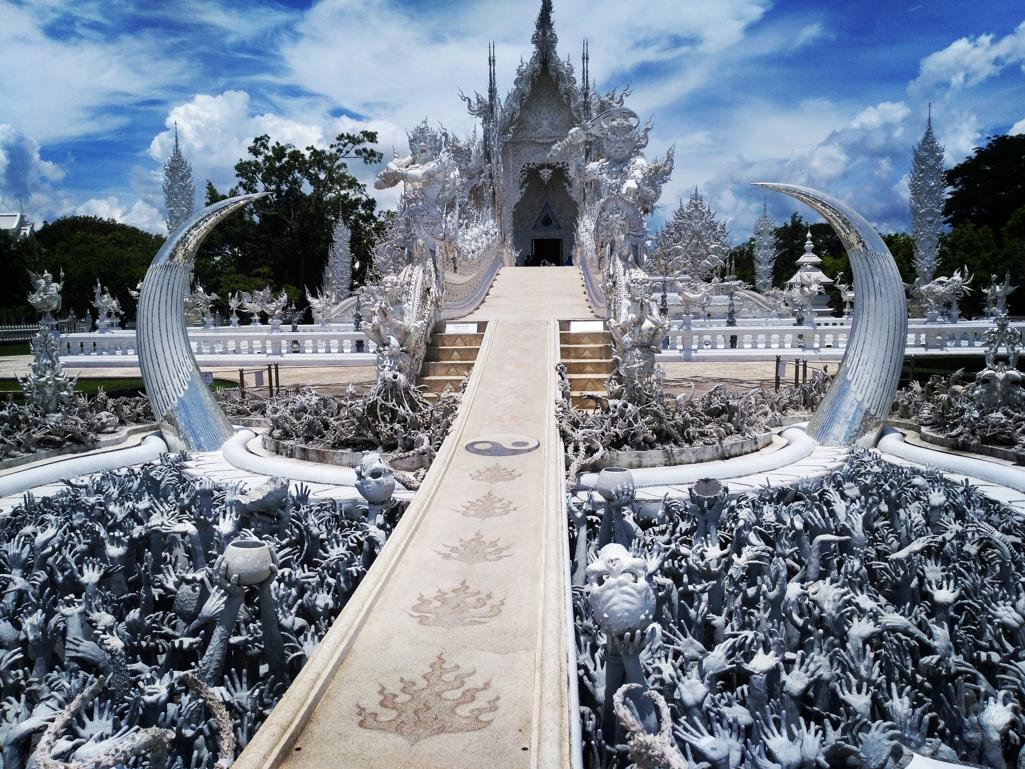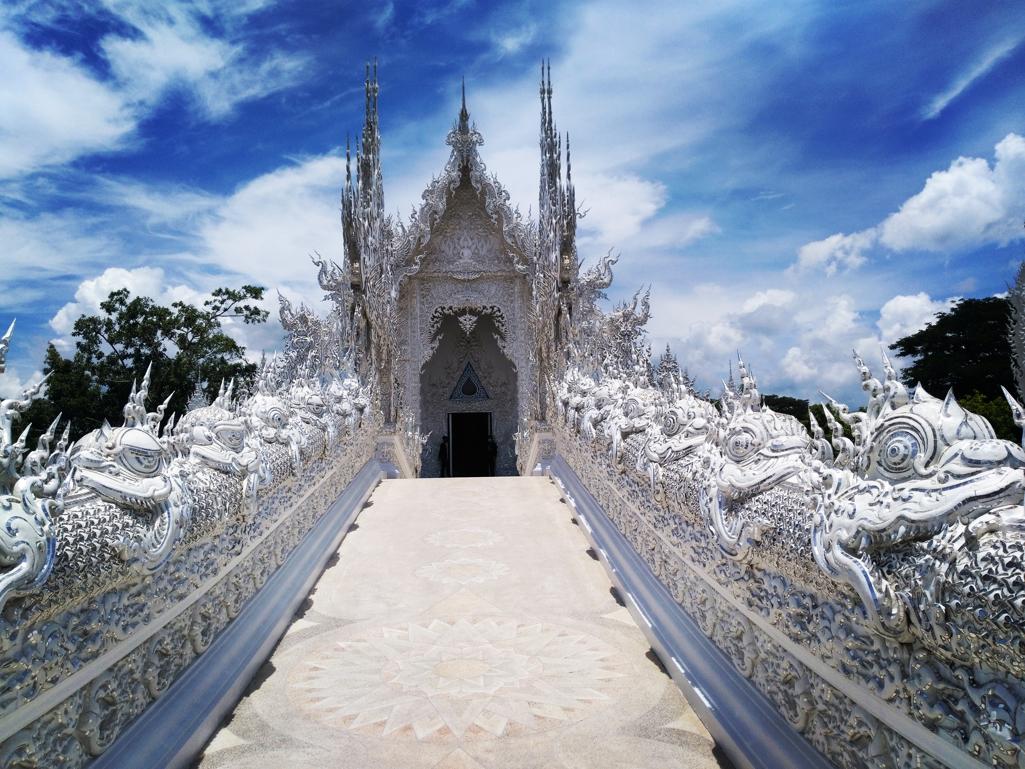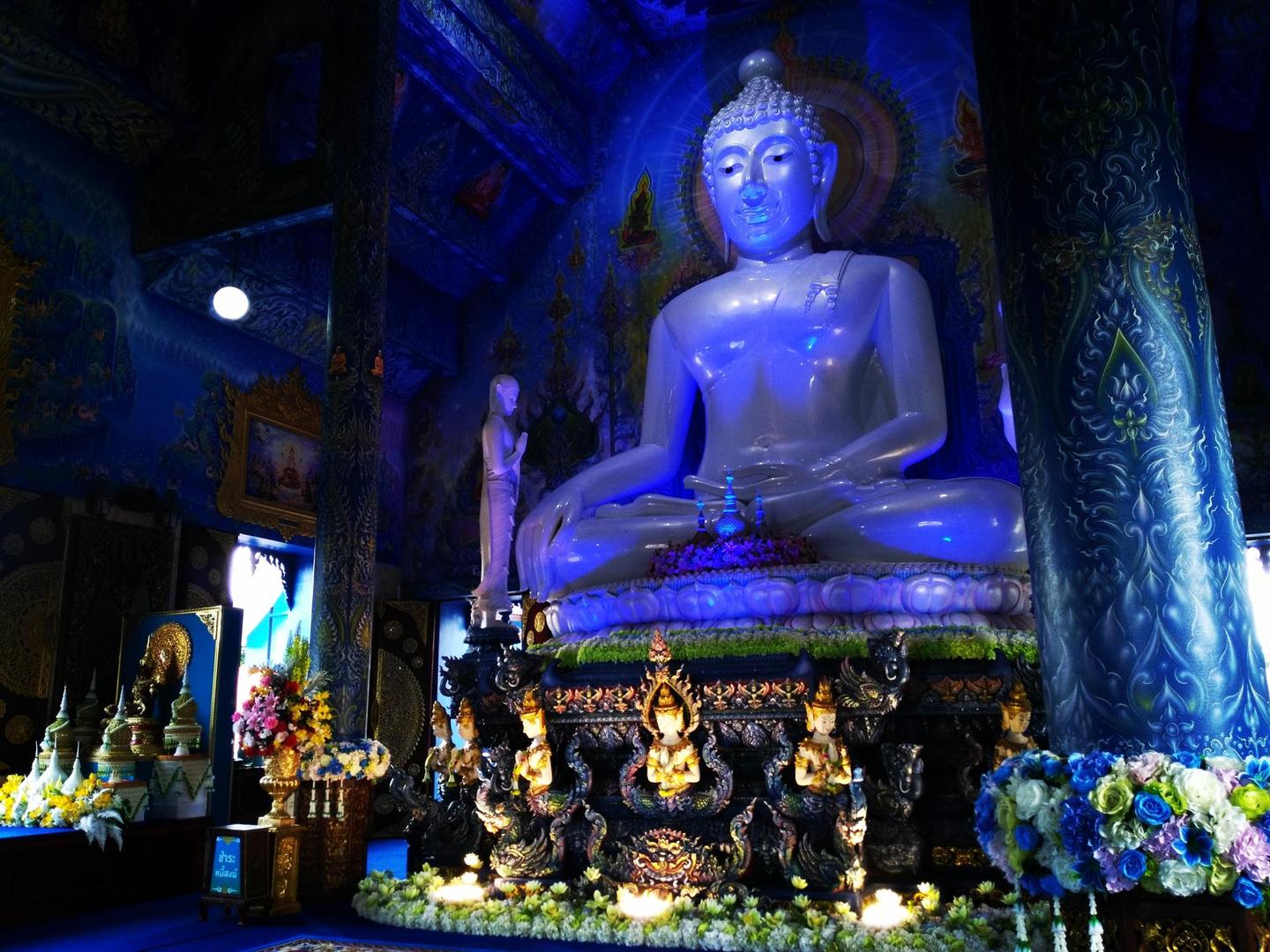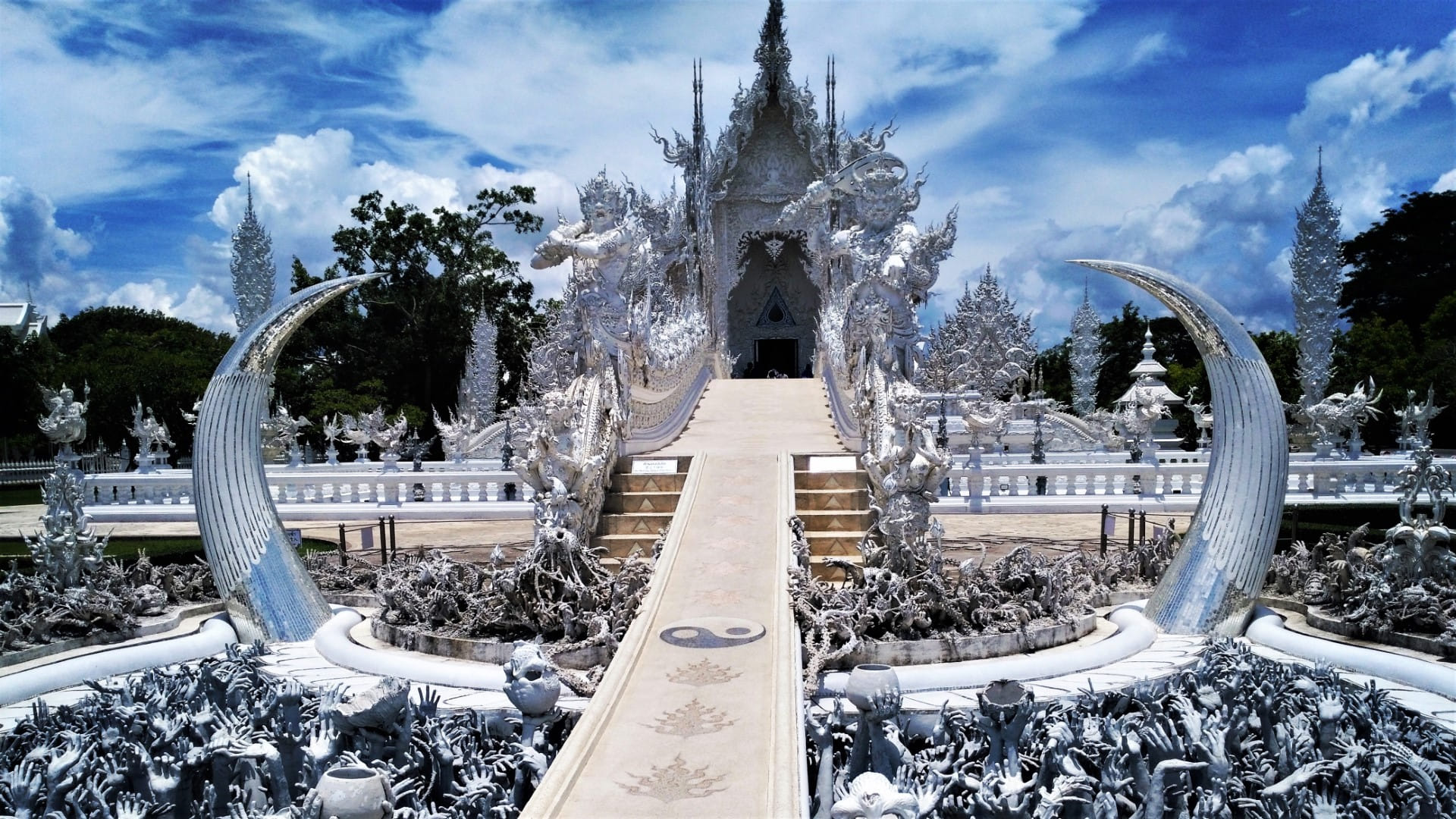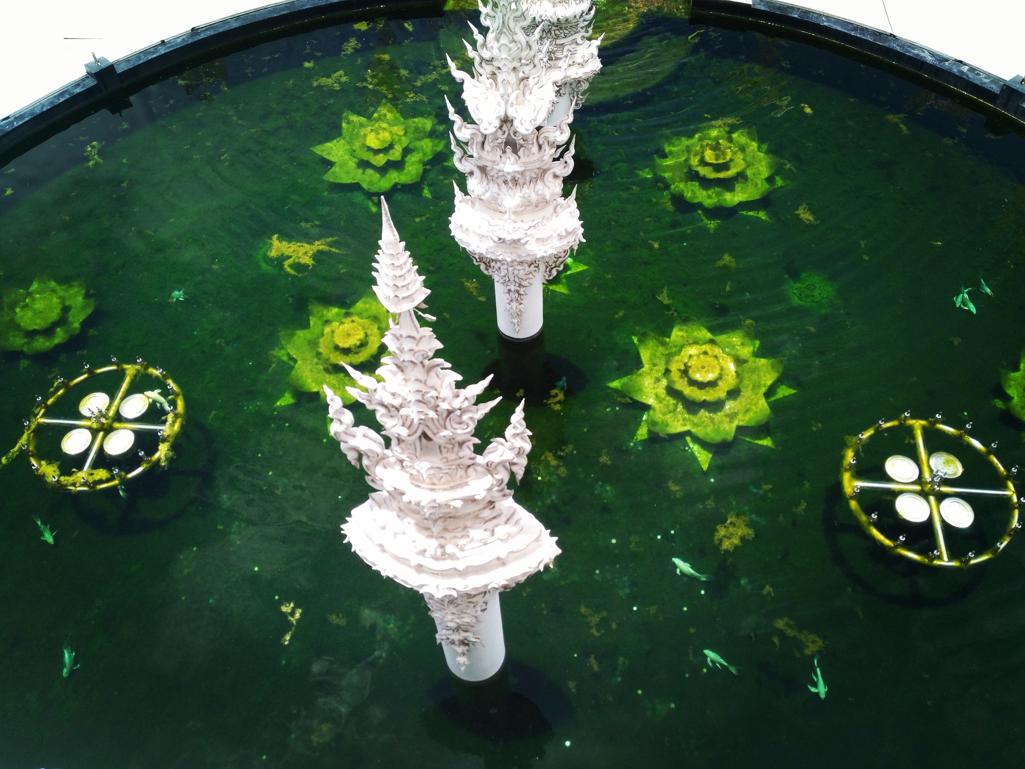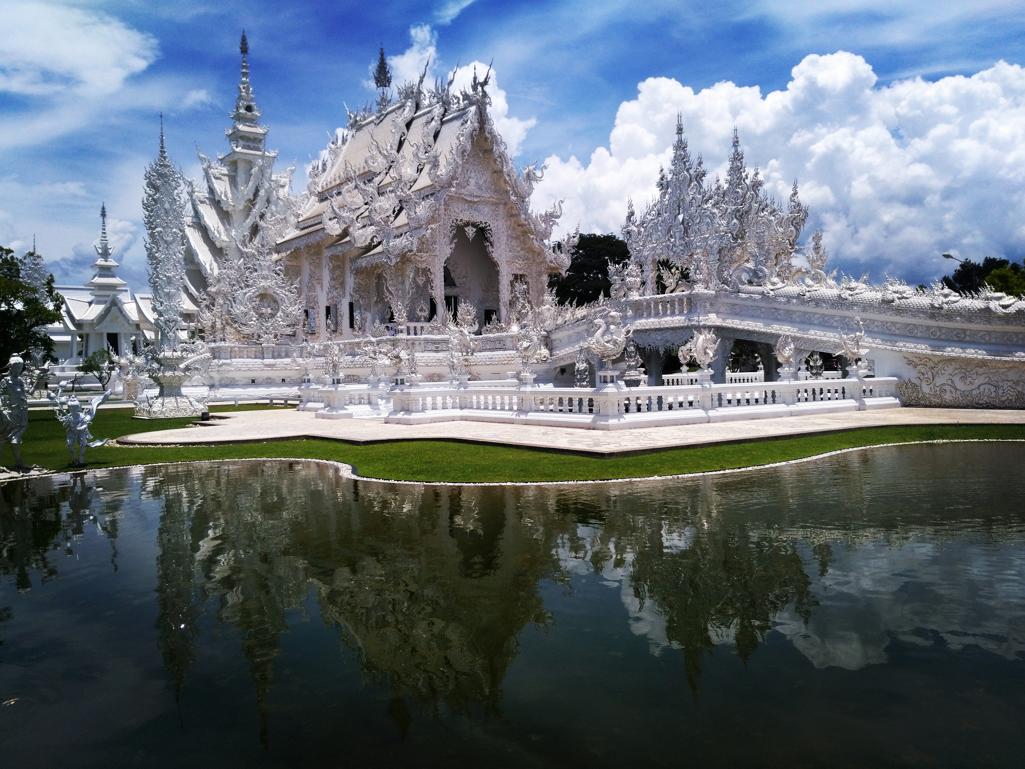
Wat Rong Khun: Chiang Rai's Iconic White Temple
The White Temple, also known as Wat Rong Khun, draws a significant number of tourists to Chiang Rai. Its distinctive architectural style has garnered both admiration for its unique take on Buddhism and, for some, questions. It’s up to you!
Discovering the White Temple Chiang Rai
The Transformation of Wat Rong Khun
In the 1990s, Wat Rong Khun was a humble structure in need of restoration. Chalermchai Kositpipat, an artist hailing from Chiang Rai, introduced an innovative renovation concept. His dual objective was to establish a tribute to King Rama IX and his hometown. Within a short span of months, the new edifice took shape, and the White Temple welcomed its first visitors in 1997.
Unveiling the White Temple’s Unique Features
Wat Rong Khun is an exceptionally unique place. While its overall architectural structure resembles that of traditional temples, its exterior and interior embellishments distinguish it from the rest. Its defining feature is its pure white facade, symbolizing purity. Chalermchai Kositpipat designed this temple as a metaphor for the interplay of good and evil, the spiritual and the material. The artist’s vision is straightforward to grasp:
- The use of the color white unequivocally represents purity.
- Mirrors are meticulously embedded in the walls and sculptures throughout, serving a purpose beyond aesthetics by reflecting light. This invites a parallel between light and spiritual enlightenment.
- The sculptures at the entrance, especially the hands emerging from hell, present a chaotic worldview, symbolizing the perils of materialism and its uncertainties.
- The elongated path, known as the Bridge of Reincarnations, leading to the temple signifies the transition to a purer and more tranquil realm, guided by the path laid out by the Buddha. This path ultimately leads to the main structure, the Ubosoth, which is emblematic not only for its architectural style but also for its intricate message.
Exploring the Heart of the Temple: The Ubosoth
While the White Temple dazzles with its extravagance, the central chamber exudes a rare simplicity. This simplicity may surprise visitors, given the artist’s penchant for grandiosity in other aspects of the temple. However, this room stands in stark contrast.
The Ubosoth’s Murals
The chamber itself holds little inherent interest; its murals, on the other hand, captivate attention. Not for their aesthetic or creative qualities, mind you. In a rather naive style, the walls are adorned with an array of fictional characters: Neo from “The Matrix,” Freddy Kruger from “Nightmare on Elm Street,” Alien, Terminator, Harry Potter, Hello Kitty, Superman, Michael Jackson, and many more.
Interpretation and Message
The experience inside the chamber takes an unexpected turn. The initial solemnity of the entry ritual gives way to a playful search for these famous figures. Strangely, there are relatively few references to traditional Buddhist cosmology, save for the protective demon Phra Rahu and a Buddha statue.
This blend of genres renders the artist’s message somewhat convoluted, to say the least. Nevertheless, if we distil the core message: humanity’s actions have far-reaching negative consequences (as evident in the depictions of atomic explosions) on the world and, particularly, the environment. By adhering to the Buddha’s teachings, a new level of consciousness can be attained. In that sense, the artist’s work can be seen as a rather simplistic and somewhat naïve portrayal, with limited depth or significant interest.
Our Perspective: A Tad Disappointing!
Upon arrival, the captivating exterior of the White Temple may lead you to anticipate an extraordinary display of creativity within. However, as you delve deeper, the artist’s simplicity and naivety become increasingly evident, tempering your initial excitement. The overall impression can lean more towards that of a tourist attraction designed for tour operators rather than a traditional Buddhist temple. While some may mention Chalermchai Kositpipat’s ambitious plan to complete a complex of nine buildings by 2070, it’s worth noting that the temple and the broader project exhibit a somewhat commercialized aspect that appears to conflict with the initial message. The narrative seems to lose its way, entangled in commercialization.
How to Get to the White Temple?
Transportation Options for the White Temple in Chiang Rai:
By Car: Accessing the temple by car is easy, and there is parking available.
By Motorbike: Motorbike access is also convenient from Chiang Rai. However, please note that the road can be quite busy and fast-paced, making it less relaxing.
By Bike: For the more adventurous and sporty travelers, you can reach the temple by bike. Keep in mind that the road may have heavy traffic, as it is a fast route.
By Bus: You can take a bus from Chiang Rai Central Station, located across from the night market.
By Taxi: A taxi ride to the White Temple costs approximately 250 baht.
Alternative Option: If you’re looking for a more budget-friendly choice, consider using the Grab or Bolt app for transportation.
Please note that these details are subject to change, so it’s a good idea to check for the most up-to-date information before planning your visit.
Practical Information about the White Temple:
Opening Hours:
- Monday to Friday: 08:00 AM - 05:00 PM
- Saturday and Sunday: 08:00 AM - 05:30 PM
Admission Fee: There is an admission charge.
Location: The Wat Ron Khun or White Temple Chiang Rai is situated 13 km from Chiang Rai, known as Wat Ron Khun or the White Temple.
Tips for Enhancing Your White Temple Visit:
Arrive early to avoid the crowds, as this temple is a popular attraction among visitors.
On full moon days, you’ll experience a unique perspective of the temple, with the light reflecting off the structure creating an entirely different ambiance



